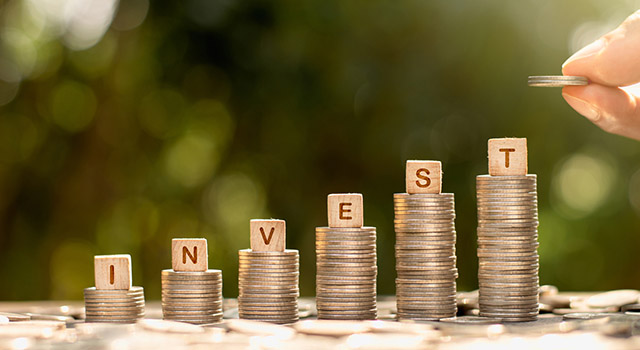If you could tell your younger self what to do, what would it be?
It may not seem like a big deal, but “start saving as early as you can” should be up there among the top three. Here’s why.
To have a chance to be financially independent by the time you retire, you’ll need this little piece of advice to your younger self to be put in action as soon as possible.
When you start saving money, the more time you have to save, the better the result will likely turn out especially if you only have a small amount of money to get started.
However, saving money is just the first step. It’s the power of compound interest that makes all the difference between keeping your savings under your bed or putting it to work to earn interest repeatedly.
Why is compound interest so powerful?

Simply put, compound interest is the interest you earn on interest. So, you not only earn interest on the money you saved, but also on previous interest.
For instance, see what happens if you save RM500 a month for just one year and let compound interest do its job.
|
Year 1 savings (RM500 x 12) |
RM6,000 |
|
Year 1 interest (2%) |
RM55 |
|
Year 1 amount + interest |
RM6,055 |
|
Year 2 interest |
RM123 |
|
Year 2 amount + interest |
RM6,178 |
Sample interest rate for calculation is 2% per year, compounded monthly. All numbers are for reference purpose only. Actual interest rates for savings products are subject to terms and conditions of individual financial institutions.
Notice how the interest you earned for the first year will also earn interest the next year so the amount you saved will continue to grow even if you stop putting money in each month.
However, earning compound interest alone may not be enough once you add inflation. The inflation rate in Malaysia has gone as high as 17.3% back in 1974 to negative 2.9% in May this year. If the interest you earn on your savings is only 2% and the inflation rate goes over that, the money you have saved is losing value just by sitting in your savings account.
If you are planning to save for retirement which will not happen for another 30 or 40 years, how do you make sure your money doesn’t lose its value by that time?
Here’s why you need saving AND investing

What happens when you add investment into your saving goals? Suddenly, it becomes possible to earn more than just the deposit interest rate on your savings, by taking some investment risk.
While investing your money involves risk, the possibility to earn more also means your savings can grow faster over time. Although investments can go up and down along with the value of your money, over time you still stand to earn more money than just saving alone.
Let’s compare three 25-year-olds. Abu chose the savings route, while Kamal chose to invest as well. Finally, Ben chose not to save or invest until much later.
When Abu and Kamal started working at age 25, they saved RM200 per month for the first 5 years. In their 30s, they increased the amount of monthly savings to RM500. Meanwhile, Ben only decided to start investing when he reached 40 years old.
Let’s find out what happens by the time they reach their 60th birthdays.
|
Abu (saving only) | ||
|---|---|---|
|
Age: 25 – 29 |
Saves RM200 a month for five years Earns returns at 2% per annum for 35 years |
RM22,840 |
|
Age: 30 – 59 |
Saves RM500 monthly for next 30 years Earns returns at 2% per annum for 30 years |
RM246,363 |
|
|
Total |
RM269,203 |
|
Kamal (saving and investing) | ||
|---|---|---|
|
Age: 25 - 29 |
Saves RM200 a month for five years Earns returns at 2% per annum for 35 years |
RM22,840 |
|
Age: 30 – 59 |
Invest RM500 monthly for 30 years Earns returns at 6% per annum for 30 years |
RM502,258 |
|
|
Total |
RM525,098 |
|
Ben (only starts investing at 40 years of age) | ||
|---|---|---|
|
Age: 40 – 59 |
Invest RM500 a month for 20 years Earns returns at 6% per annum for 20 years |
RM231,020 |
Sample interest rate for savings is 2% while sample investment return is 6%; both compounded monthly. All numbers are for reference purpose only.
As all three near retirement age, Abu will have RM269,203 saved while Kamal has grown his invested savings to more than half a million ringgit. Although Ben decides to start investing years later than the others, at least he will still have RM231,020 saved.
There are no real losers in the above simulation. The biggest loser will only be those who don’t save at all.
Here are three key takeaways from this example:
- Start saving and investing money as early as possible
- Start investing your savings as early as possible
- Starting later means you need to invest more to earn less
While you may not have a lot of money to start investing when you are younger, you can still look for ways to invest for less.
Where do you invest RM500 a month?

If you are new to investing, it’s best to keep things simple. Look for ways you can invest smaller amounts without having to pay high fees.
Even if you only have RM500 to start investing, you can still get started by using investment vehicles like exchange-traded funds (ETFs) or unit trust funds (UTs) which allow you to dip your toes into the main types of investment asset classes.
The main asset classes for beginner investors are equities (stocks), fixed income (e.g. government bonds) and cash or cash equivalents (e.g. money market funds). For more savvy investors, there are alternatives like commodities, futures (such as oil or gold), real estate and foreign exchange.
If you have started saving money and thinking ahead on what to do next, you are on the right track. It's never too early to start planning for retirement.
Want to learn more about the different ways to invest and grow your savings? You can start by using the Maybank Financial Goal Simulator to help you plan your goals.




